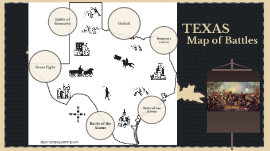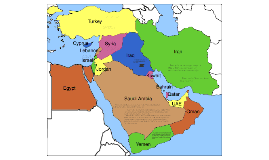interactive map
Transcript: Indians in the 1930's were hardly affected by the Great Depression; however, the New Deal included them in its problems to solve. The Government wanted to remove the assimilation of these tribes and promote cultural relativism, or the acceptance of different cultures. John collier, the leader for Indian Affairs promoted new legislation that gave Indians their land back in the west, this legislation was called the Indian Reorganization act. Many years after the New Deal, Indians gained millions of acres of land but continued to be the poorest segment in the population. (C.R) California Every Time a Bell Rings an Angel Gets His Wings - It's a Wonderful Life (9/9) Movie CLIP (1946) HD - YouTube. YouTube. Web. 6 Feb. 2013. Tanner McFadden McDougal , Holt. The Americans Reconstruction to the 21st Century. Orlando, Florida: Houghton Mifflin Harcourt Publishig Company , 2012. Industrial Workers At the start of the depression, Texans did not want to believe that it was real. Due to Hoover's adminstration failing to help provide Texans needs, local government and communities took action to help the people of Texas. Texans disliked President Hoover, called empty, inside out pockets "Hoover flags". In the next election, Texas voted for Franklin D. Roosevelt over Herbert Hoover. During the depression, the state struggled to keep order and to keep criminal activity at a minimal. (C.R) In larger cities like New York City, bread lines (like the one depicted above) and soup kitchens became common sights. Unemployed men would come and line up waiting for free or low cost food. Often the lines became long and stretch on for a couple of blocks. MC Mexican-Americans The Great Depression had a profound effecto on workers. First of all there was the ever present idea of unemployment. In some areas unemployment rose to 50% or higher. Thus finding a job became ever more competitive. Sometimes Women seeked jobs in desperacy; however, most of society still believed that the workplace wasn't a woman's job. Unemployed men would walk around each day in search of a job. But after months and sometimes even years they sometimes gave up and left their family. Additionaly suicide rates spiked during this time, men belived that joblessness was a sign of failure. Unemployed men who couldn't find a jobs after many months became ashamed. Fortunatly, once the New Deal came into effect unemployed persons had plenty of help getting back onto their feet. The Public Works Administration, the Civilian Conservation Corps, and the Works Progress Administration (WPA) were a only a few of the programs put into effect to aide workers. The WPA was one of the programs that helped releive unemployment. It created as many jobs as possible, from construction work to aiding writers. The Federal Arts Project was one of the forms of relief under the WPA. It created jobs for painters, photographers and sculpters. The WPA also created jobs for the theatre and music departments. MC African Americans in the South were poorly treated, they could hardly get a job because "black shirts" demanded jobs for white people first. The black shirts were a group of white people who strongly descriminated against African Americans. 400,000 African Americans migrated North for more jobs and less racism, but were without luck. In New York, Black unemployment was at 50% in 1932. During the New Deal, Afircan Americans were affected by racial tension and recieved less aid and attention than white citizens. by 1935, 1/4 of all African Americans were recieving governent assistance. However, The New Deal refused to make the issue of race a part of its agenda and descrimination continued. During the New Deal, President Roosevelt appointed women government jobs to increase women's role in the democratic party. The NRA offered little employment for women and the Social Security Program excluded many jobs that women held. But with Mrs. Roosevelt promoting women's rights, the women of America were able to add onto the Social Security Act and provide a place for women to recieve pension. During the height of the 1920's Florida experienced a land boom and people started to flood into Florida. Land speculators, as they were called, bought an abundance of land at a cheap price then began to seel it off at a much much higher price. Because of this rent costs dramatically increased, therefore people couldn't live here anymore. Invariably the also inflated the economy creating a depression in Florida four years before the Great Depression throughout the country started. MC Texans Women and the New Deal Prosperity far distant; the journal of an Ohio farmer, 1933-1934. Reference & Research Book News Feb. 2013. General OneFile. Web. 4 Feb. 2013. (PWA) It's a Wonderful Life Bibliography Public Works Administration Brinkley, Alan. American history: a survey. 8th ed. New York: McGraw-Hill, 1991. Bread Lines in the City Tanner McFadden After the stock market crash, 1/2 million Mexican-Americans left for

















